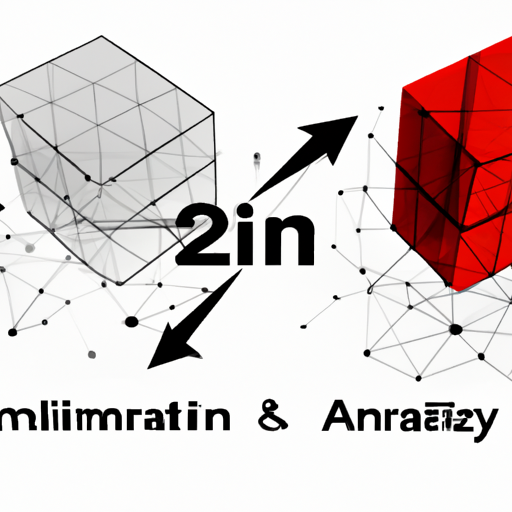Understanding Dimensionality Reduction in AI for Business Owners
In the realm of artificial intelligence (AI), one concept that business owners should be aware of is dimensionality reduction. Dimensionality reduction refers to a set of techniques used to reduce the number of variables or features in a dataset, while preserving the key information that is essential for analysis. This technique has significant implications for businesses that are investing in AI and machine learning (ML) technologies.
The Challenge of High-Dimensional Data

Modern businesses generate and collect vast amounts of data, including customer information, financial records, and operational data. In many cases, this data involves numerous variables or features, making it difficult to work with effectively. When data has a high dimensionality, meaning a large number of variables, it can lead to challenges in analysis and model development.
High-dimensional data can pose problems such as the curse of dimensionality, which is the increase in computational complexity as the number of variables grows. Moreover, high dimensionality can introduce noise and redundancies that can impact the accuracy and performance of AI and ML models. Dimensionality reduction techniques offer a solution to these challenges.
Benefits of Dimensionality Reduction for Businesses
By applying dimensionality reduction techniques to their datasets, businesses can unlock several significant advantages:
- Improved Performance and Efficiency: By reducing the number of dimensions, businesses can enhance the performance and computational efficiency of AI and ML algorithms. With fewer features, models can process data more quickly, allowing for faster predictions, recommendations, and decision-making.
- Increased Accuracy and Generalization: Dimensionality reduction can help improve the accuracy and generalization capabilities of AI models. By eliminating noisy and redundant features, the models can focus on the more informative and relevant variables, leading to better predictions and insights.
- Enhanced Visualization and Interpretability: High-dimensional data can be challenging to visualize, making it difficult to gain insights and interpret patterns. Dimensionality reduction can transform the data into lower-dimensional representations that are easier to visualize, facilitating a better understanding of complex relationships and trends.
- Reduced Storage and Computational Costs: By reducing the number of variables, dimensionality reduction can significantly reduce the storage requirements for datasets. This reduction in data size also translates into lower computational costs, especially when working with resource-intensive AI and ML algorithms.
Common Approaches to Dimensionality Reduction
There are two primary approaches to dimensionality reduction: feature selection and feature extraction.
- Feature Selection: This approach involves selecting a subset of the original features based on specific criteria. Feature selection methods aim to identify the most relevant and informative variables while excluding unnecessary or redundant ones. Techniques like correlation analysis, backward elimination, and forward selection are commonly used for feature selection.
- Feature Extraction: Feature extraction involves transforming the original variables into a small set of new variables, known as latent or derived variables. The derived variables are constructed in such a way that they capture the essential information of the original data. Principal Component Analysis (PCA) and Linear Discriminant Analysis (LDA) are popular feature extraction techniques.
Considerations for Dimensionality Reduction in Business Applications
When applying dimensionality reduction techniques to business datasets, there are several factors to consider:
- Data Quality: Dimensionality reduction algorithms can be sensitive to noisy or missing data. Therefore, it is crucial to ensure data quality by addressing any anomalies, outliers, or inconsistencies before applying dimensionality reduction techniques.
- Interpretability: While dimensionality reduction can enhance interpretability, it can also introduce some level of information loss. It is essential to strike a balance between reducing dimensionality and preserving the critical information required for accurate analysis and decision-making.
- Scalability: As businesses continue to collect increasingly large and complex datasets, it is important to consider the scalability of dimensionality reduction algorithms. Some techniques may not be suitable for very high-dimensional data due to computational limitations.
Conclusion
Dimensionality reduction is an essential technique in the field of AI, enabling businesses to work with high-dimensional datasets more efficiently and effectively. By reducing the number of variables while preserving critical information, businesses can enhance their models' performance, accuracy, and interpretability. Understanding dimensionality reduction and its potential benefits can help business owners make informed decisions when implementing AI and ML solutions.